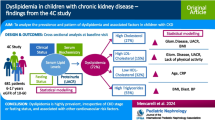Abstract
Type 2 diabetes is associated with a marked increase in the risk of coronary artery disease. Dyslipidaemia is believed to be a major cause of this increased risk. Recently, elevated levels of lipoprotein (a), Lp(a), have been reported to be associated with an increased risk. However there is very little data regarding Lp(a) concentrations and type 2 diabetes from India. The objective of the study was to assess serum Lp(a) levels in type 2 diabetics with and with out evidence of clinical nephropathy. We estimated serum Lp(a) levels in 30 control subjects, 30 diabetics without evidence of clinical nephropathy and 30 diabetics with evidence of clinical nephropathy. Statistical analysis showed that Lp(a) levels were increased in diabetic patients with nephropathy (mean 46.3±17.6 mg/dl). The Lp(a) levels however did not differ significantly between control (mean 20.2±15.9 mg/dl) and diabetics without nephropathy (mean 22.6±13.1mg/dl). Thus diabetes per se seems to have little or no influence on serum Lp(a) levels, however elevated levels were seen in patients with nephropathy.
Similar content being viewed by others
References
Taylor, S.I. (1995) Diabetes Mellitus, chapter 21 in The metabolic basis of inherited diseases, (Eds) Scriver, C.R., Beudelt, A.L., Sly, W., Valle, D., New York: McGraw Hills., p1841.
Brown, W.V. (1994) Lipoprotein disorders in diabetes mellitus Med. Clin. North Am. 78, p143–161.
Marcovina, S.M. and Marlys, L.K. (1998) Lipoiprotein (a) a risk factor for coronary artery disease. Am. J. Cardiol. 82, 57U-66U.
Dahlen, G., (1974) The pre-beta 1 lipoprotein phenomenon in relation to serum cholesterol and triglycerides levels, the Lp (a) lipoprotein and coronary heart disease documented by angiography. Circulation 74, 758–765.
Scanu, A.M. and Gunther, M.F. (1990) Lipoprotein (a). Heterogeneity and biological relevance. J. Clin. Invest. 85, 1709–1715.
Mclean, J.W., Tomlinson, J.E., Kuang, W.J., Eaton, D.L., Chen, E.Y., Fless, G.M., Scanu, A.M. and Lawn, R.M. (1987) cDNA sequence of human apolipoprotein (a) is homologous to plasminogen. Nature 330, 132–137.
Utermann, G. (1995) Lipoprotein (a), chapter 58 in The Metabolic Inherited Diseases. Eds, Scriver, C.R., Beudelt, A.L., Sly, W., Valle, D., New York: McGraw Hills. p1841.
Lackner, C., Cohen, J.C. and Hobbs, H.H. (1993) Molecular definition of the extreme size polymorphism in apolipoprotein (a). Hum. Mol. Genet. 2, 933–940.
Tomlinson, J.E., Mclean, J.W., Lawn, R.M. (1989) Rhesus Monkey apolipoprotein (a) sequence, evolution and sites of synthesis. J. Biol. Chem. 264, 5957
Chiesa, G., Hobbs, H.H. and Koschinsky, M.L. (1992) Reconstitution of lipoprotein(a) by infusion of human transgenic mice expressing human apolipoprotein (a). J. Biol. Chem. 267, 24269
Rhoads, G.G., Dahlen, G., Berg, K., Moten, N.E. and Dannenberg, A.L. (1986) Lp(a) lipoprotein as a risk for myocardial infarction. JAMA. 256, 2540–2544.
Jenkins, A.J., Janet, S.S., Edward, D.J. and James, E.D. (1991) Increased plasma apoliopoprotein (a) levels in IDDM patients with microalbuminuria. Diabetes 40, 787–90.
Haffner, S.M., Philip, A.M., Machael, P.S., Morales, P.A., Stern, M.P. and Gruber, M.K. (1992) Lp(a) concentration in NIDDM. Diabetes 41, 1267–1271.
Wanner, C., Radu, D., Bartens, W., Kramer, J., Brewer, H.B., Schollmeyer, P. and Wieland, H. (1993) Elevated plasma Lp(a) in patients with nephrotic syndrome. Ann. Int. Med. 119, 263–269.
Geethanjali, F.S. (1999) Lipoprotein (a) [Lp(a)] in various conditions PhD. thesis, Dr. M.G.R. Medical University, Chennai, 96.
Black, I.W., Wilcken, D.E.L. (1992) Decreases in apolipoprotein (a) after renal transplantation: Implications for lipoprotein (a) metabolism. Clinical Chem. 38, 353.
Thomas, M.E., Freestone, Z., Varghese, J.W., Persaud, J.W. and Moorhead, J.F. (1992) Lipoprotein (a) in patients with proteinuria. Nephrol. Dial. Transplant. 7, 597–601.
Author information
Authors and Affiliations
Rights and permissions
About this article
Cite this article
Kumari, S.J., Jayaram, N., Vincent, L. et al. Serum Lp(a) in diabetics with and without evidence of clinical nephropathy—A preliminary study. Indian J Clin Biochem 17, 45–48 (2002). https://doi.org/10.1007/BF02867941
Issue Date:
DOI: https://doi.org/10.1007/BF02867941




